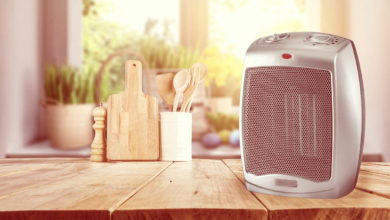With winter around the corner, there’s an awful lot to prepare. One easily overlooked task is the cleaning of your household’s heaters. Chances are that they will, through months’ of non-usage, have collected dust, debris and particulate matter. This not only looks unsightly, it can also negatively affect their performance, and even cause safety hazards. Whether you have a radiator or baseboard heater, make sure your home’s heating is in top shape for winter, by following these simple steps. No special know-how or equipment required. Read on!
Things you will need:
- Micro-fibre cloths
- Micro-fiber duster
- Warm soapy water, or warm water with detergent
- Spray bottle of compressed air duster
- Perhaps a blow dryer
- Vacuum cleaner (including nozzle and brush attachments)
- Screwdriver
- Your heater’s instruction manual
First, turn off the heater and unplug it at the wall in order to protect yourself. Remember to make sure it’s completely cool to the touch as well before you start cleaning it!
Next, thoroughly clean the outer surface of the heater. Remove any dust or grime using a duster or blow dryer, then wipe down the surface of the heater using a cloth and warm soapy water or detergent. Ensure the heater is completely dry – and dust-free! – before you proceed to the next step.
Remove the cover of the heater (if there is one) to access the inner compartment. Refer to the instruction manual of your product if you are unsure about how to proceed at this point. Once the cover of the heater is removed, loosen all the dust and debris clinging to the interior of the heater using a blow dryer; or a vacuum cleaner with narrow brush attachments and nozzle installed so you can easily reach the inside section of the heater. Alternatively, you can use a spray bottle of compressed air duster. The latter (or a small feather duster) is especially useful if you need to access extra small crevices and narrow spaces. If you are able (it depends on the type of heater), remove any grime using a scrubbing brush.
(Note: if you suffer from dust allergies, make sure to wear a mask when cleaning.)
Next, thoroughly and carefully wipe all surfaces of the inner compartment using a damp cloth and soapy water or detergent. Make sure you don’t damage the fins or get water in any of the electrical components. Again, allow everything to dry completely before proceeding.
The last step is to replace the cover. Before replacing the cover, vacuum it and remove any remaining dust using the vacuum cleaner brush attachment. Once it is back in place, you are ready to turn your heater back on!
And presto! Cleaning your household’s heaters is a straightforward task that anyone can do, no special equipment or expertise are required. Remember to clean all your home’s heaters regularly, perhaps seasonally, in order to optimize their performance and extend their lifespan.





